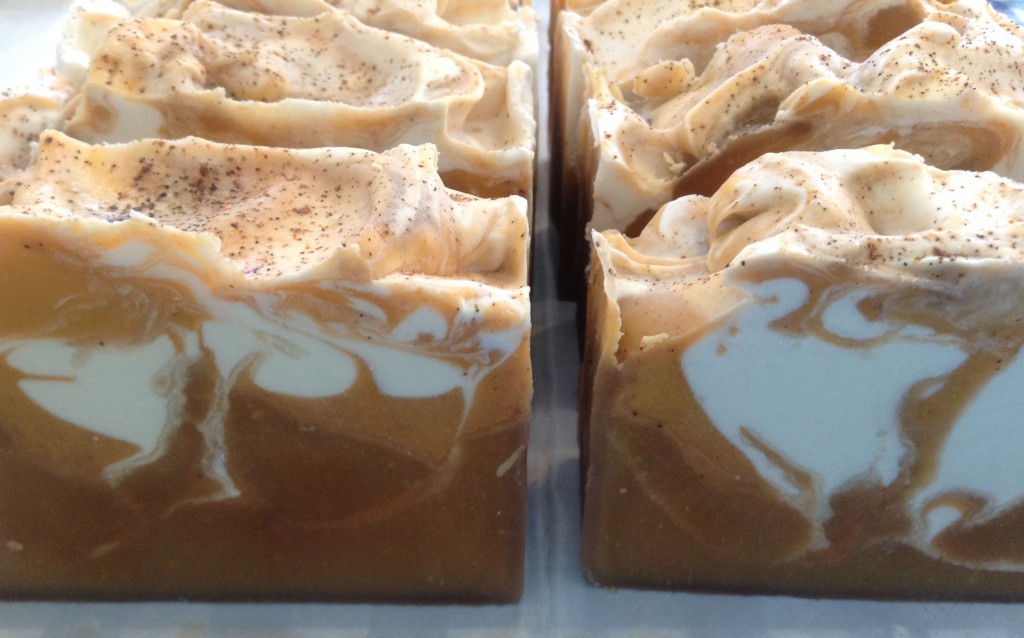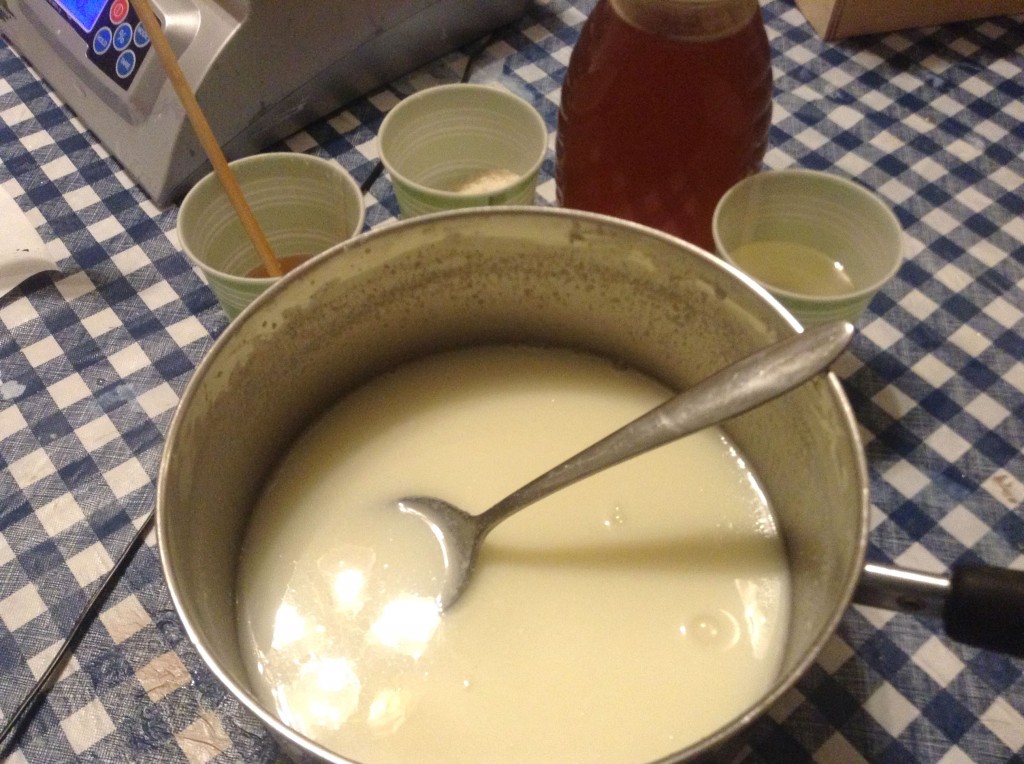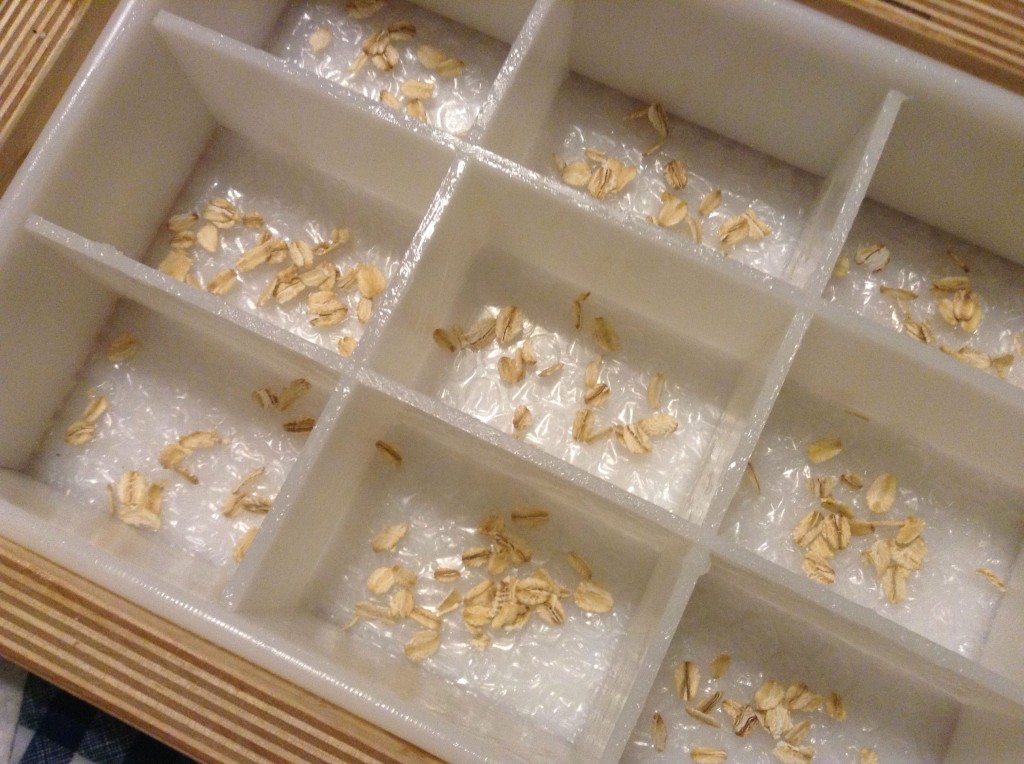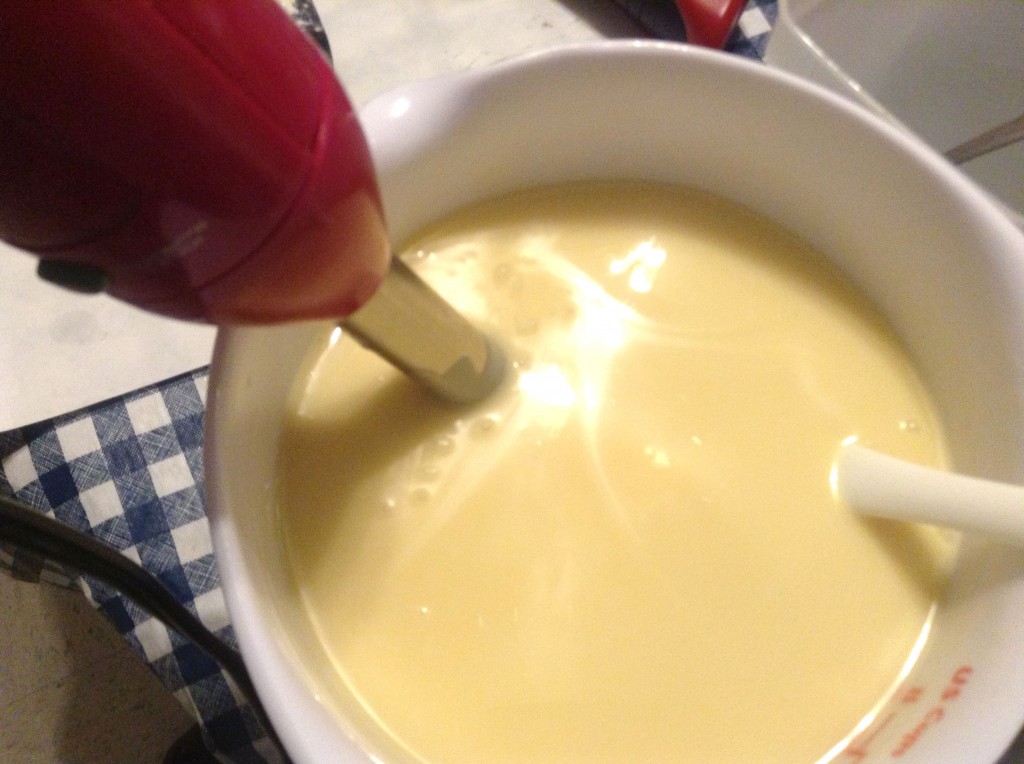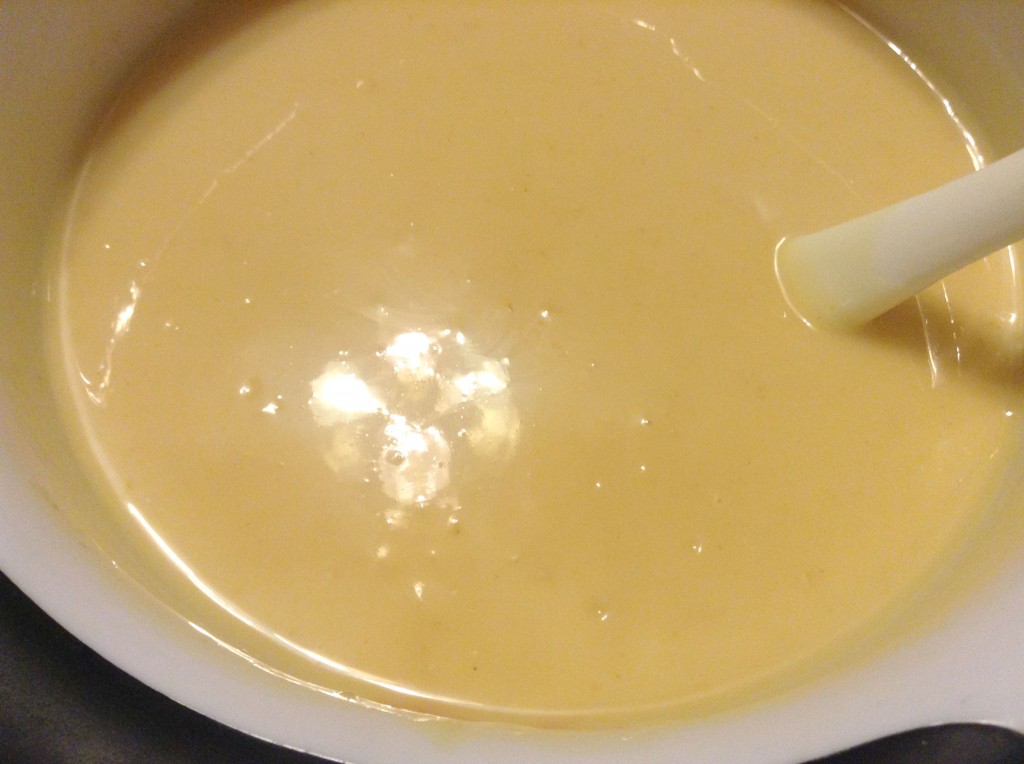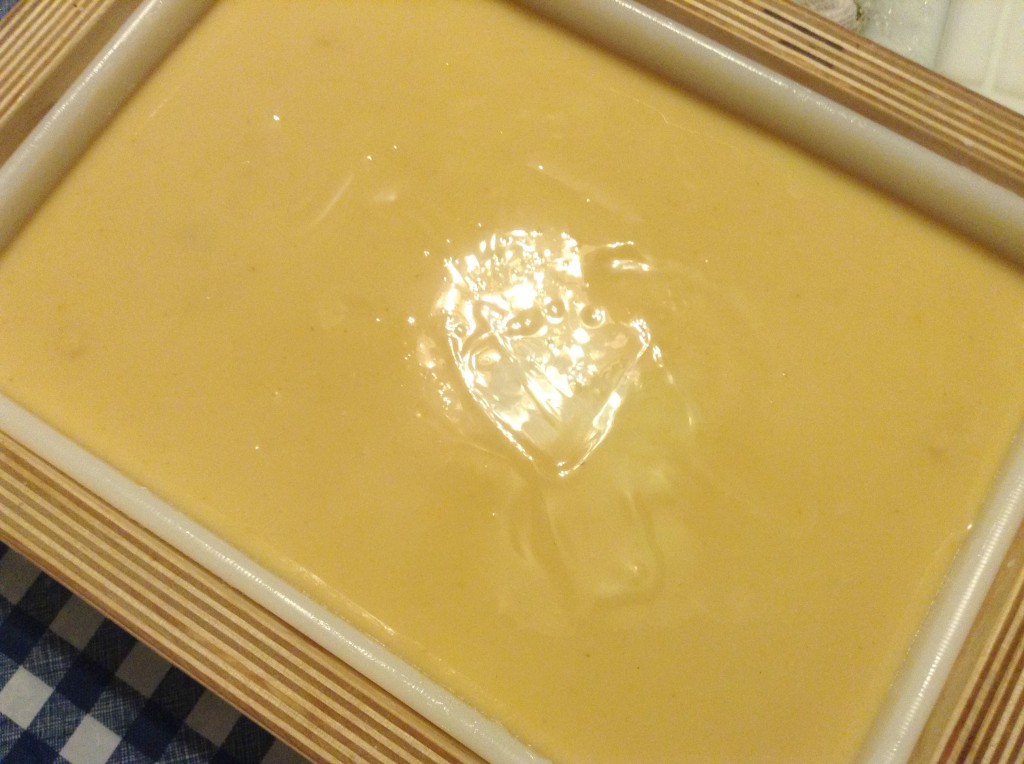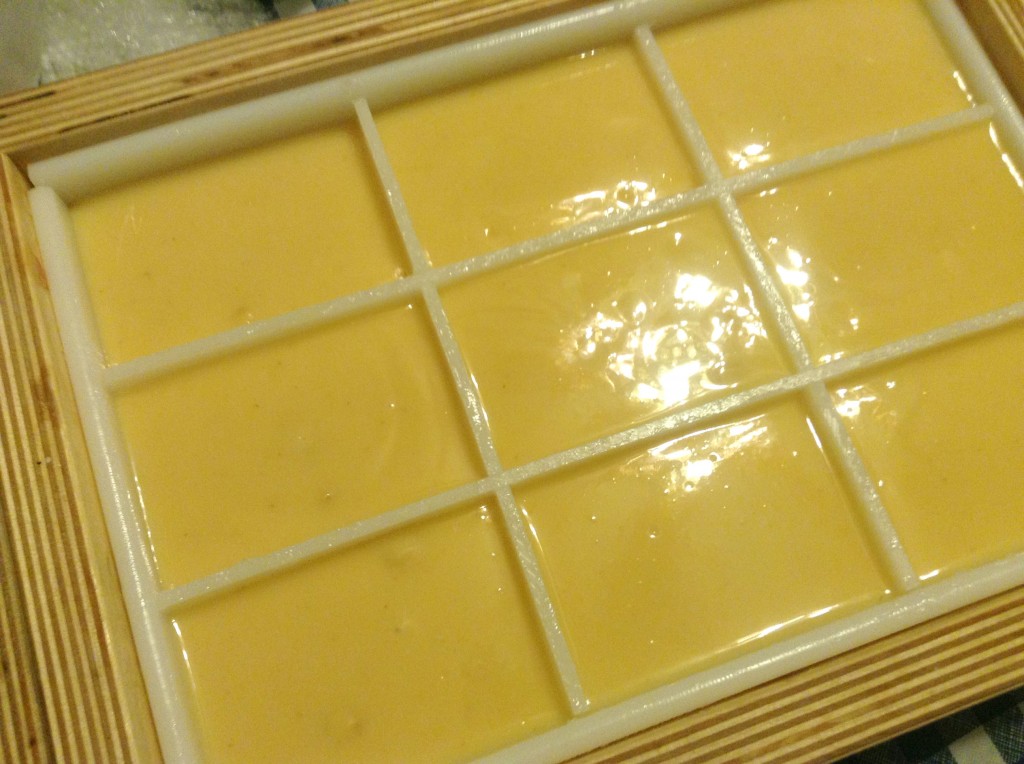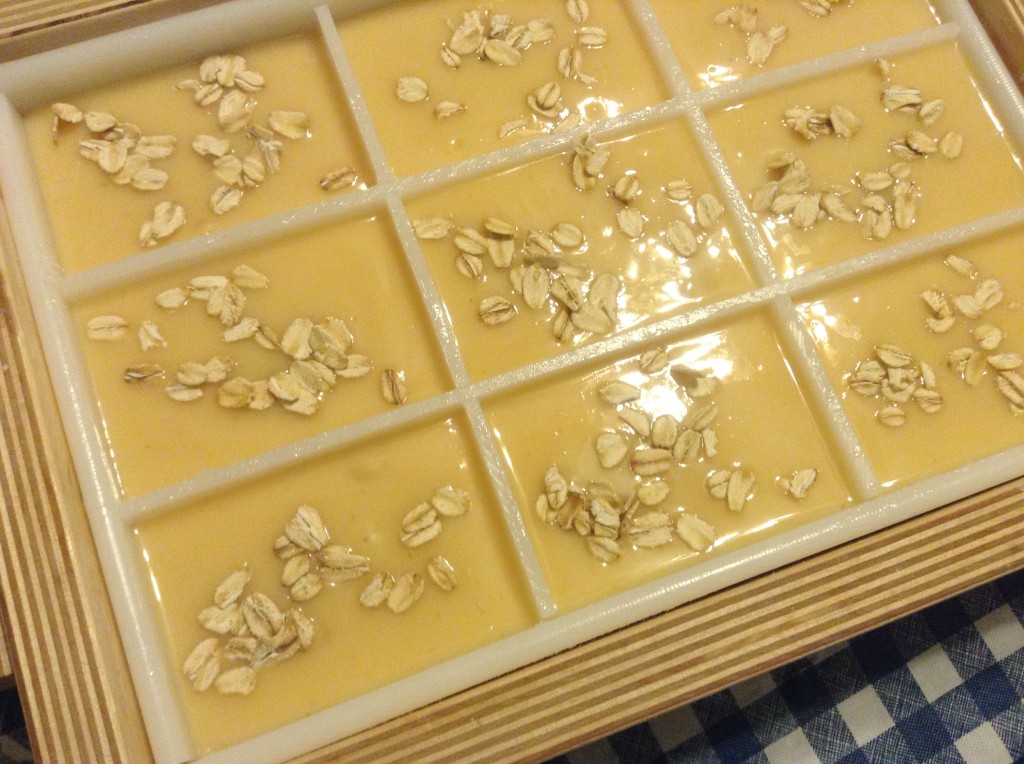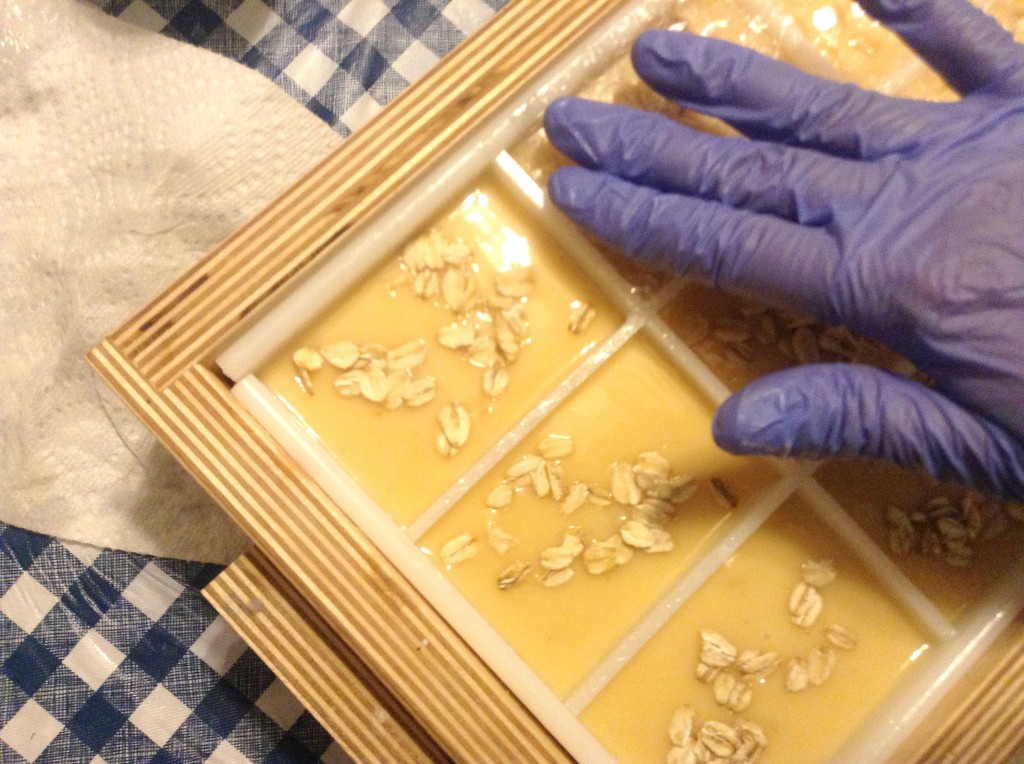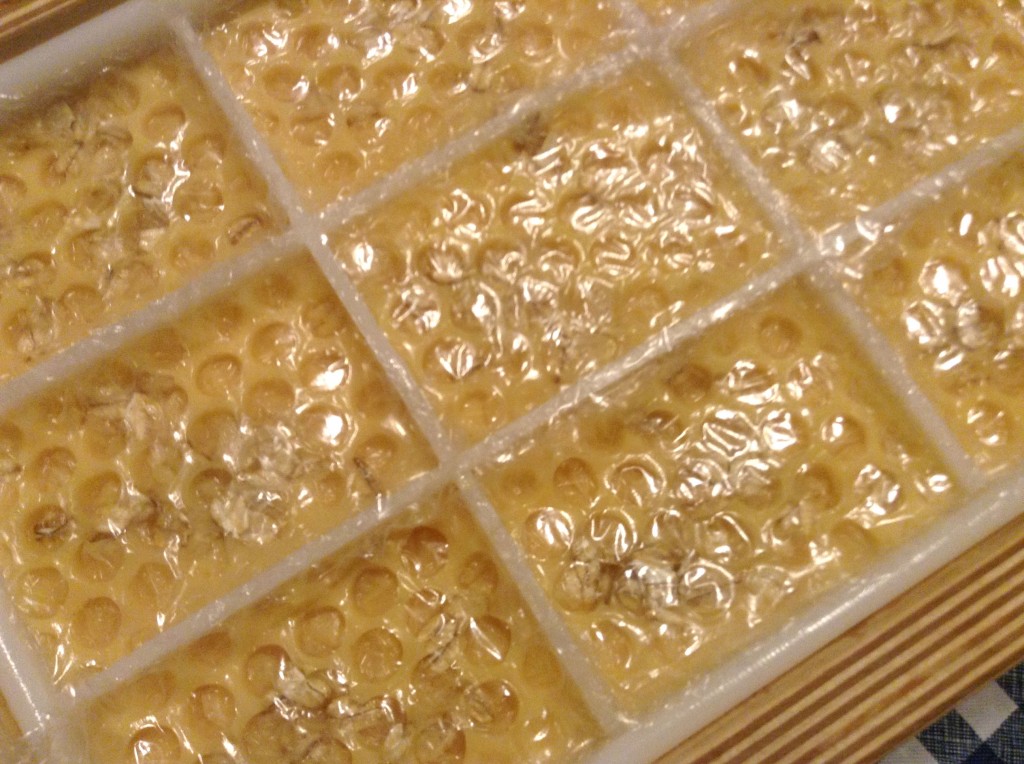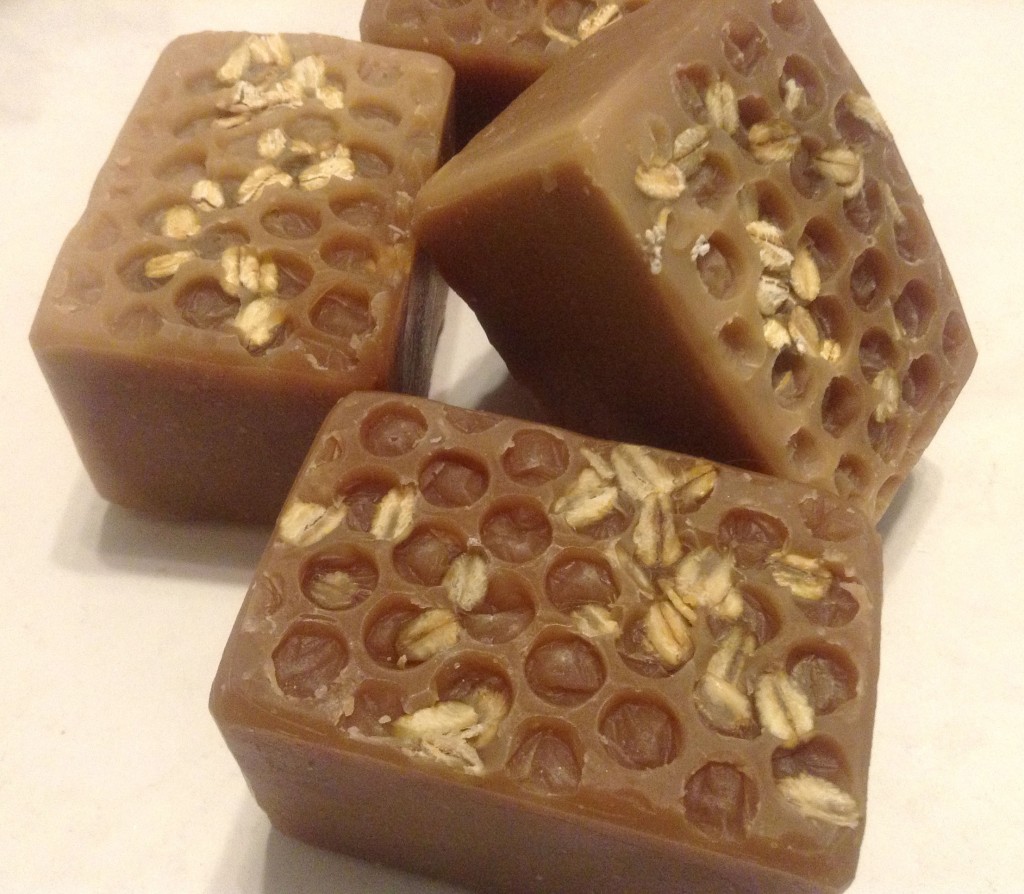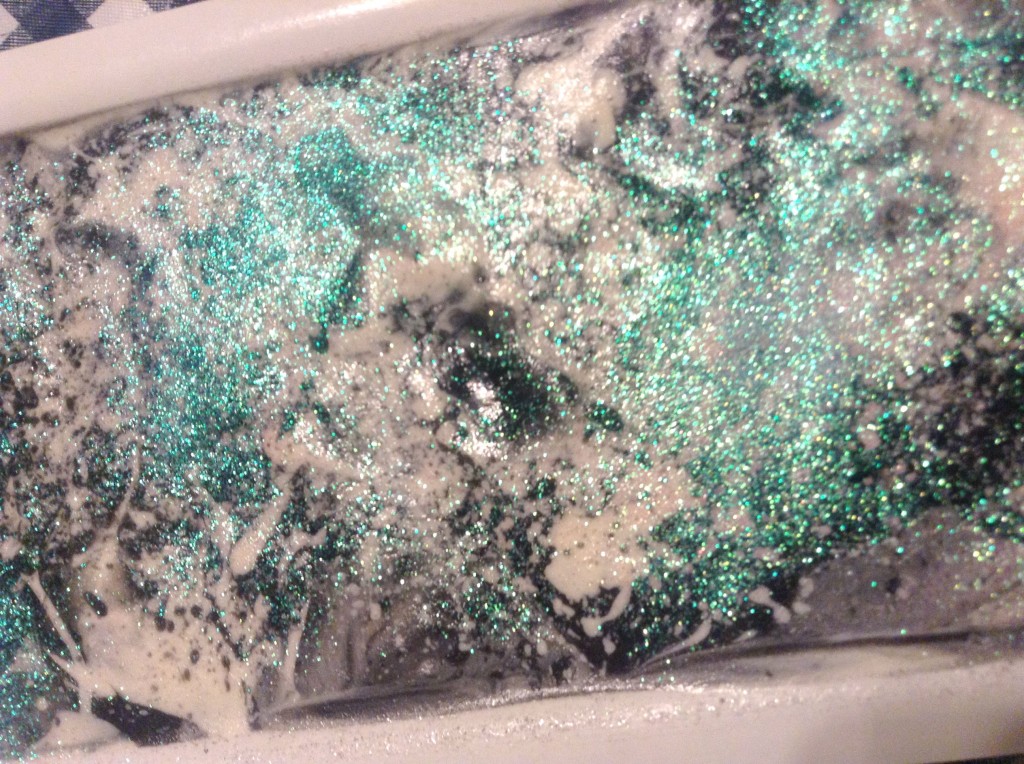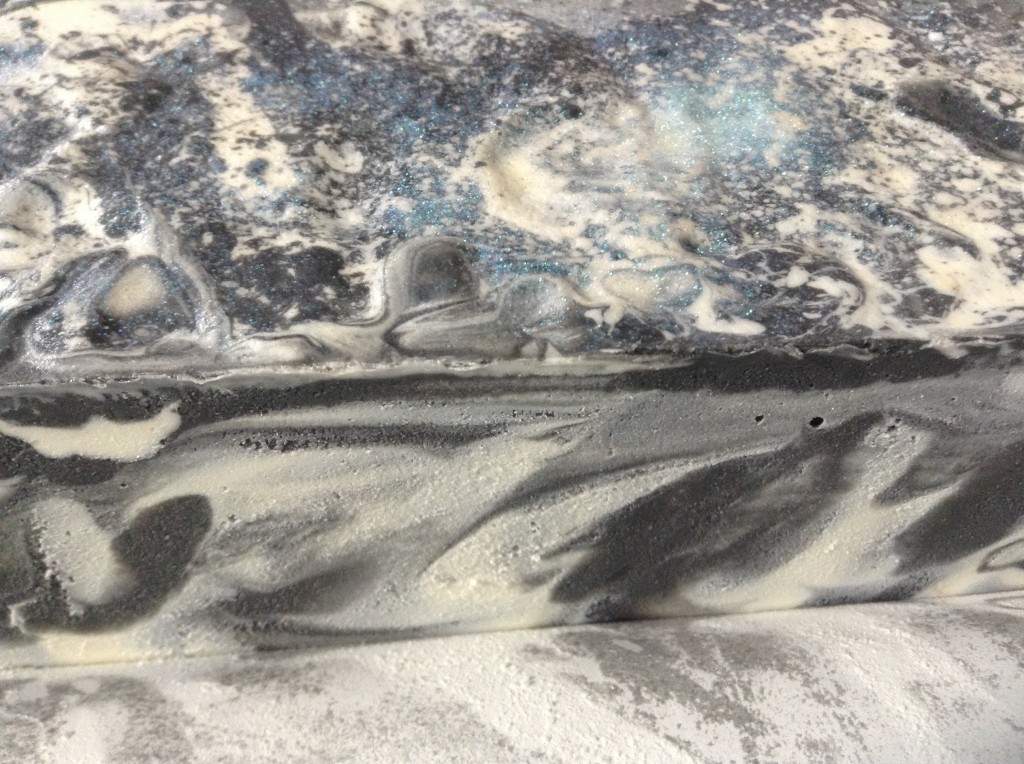Most soapmakers experience accelerated trace at some point. Trace, of course, is the term for oils and lye that have been emulsified to the point that when a dribble of soap is dropped on top of the rest of the soap batter, the dribble stays on the surface of the batter for a short period of time and leaves a “trace” on the surface. Trace can accelerate for a variety of reasons.
In his book Scientific Soapmaking, chemistry professor Kevin Dunn says that trace can be accelerated based on three elements:
- water content
- temperature
- the presence of catalysts (e.g., ingredients in some fragrances)
If you want to slow down or accelerate trace, the easiest thing to do is control the water content or temperature. For example, if you know the recipe you are using is slow to trace and you want it to move more quickly, you can discount the water and mix the oils and lye at a higher temperature. This is a handy tip for making Castile soap, as olive oil is notoriously slow to trace when it makes up 100% of the oil content. Instead of using full water (38%), you can discount to, say, 33%, and you can mix the oil and lye at 110°.
It’s always a good practice not to discount water or mix at a higher temperature when you are working with a fragrance you haven’t used before, precisely because sometimes fragrances contain ingredients, such as clove oil, that will accelerate trace. If you have already discounted water and mixed at a high temperature, you could wind up with a seize, sometimes known as “soap on a stick.” It takes an experienced soapmaker to save soap that has seized, and sometimes, even experienced soapmakers aren’t able to salvage it.
I recently experienced some major acceleration using a new fragrance called Pumpkin Cheesecake.
Just about as soon as I added the fragrance to my soap, it started to thicken up, and it was just about all I could do to get it into the mold and attempt a swirl before it completely hardened.
I knew the soap would likely discolor because it was such a dark, reddish color. As you can see in the video, I separated the soap into three parts, two of which I colored. I was still able to get a nice swirl with a spoon, but I was really afraid the soap would be ruined because it looked like it was starting to rice in the mold, and if I had tried to stick blend it at that point, the soap would have been utterly ruined.
I took the soap’s temperature before I put it away, and it was already 104° on the bottom of the mold. Even if I had wanted to, there would probably have been nothing I could have done to prevent the soap from gelling. If I had tried to decrease the temperature by putting it in the freezer, it would have at least partially gelled. I am not a fan of partially gelled soap.
I decided the best thing to do was just to let it gel and monitor the temperature closely. If the soap looked like it was heating up too much in the mold, I planned to let it sit in a cool spot, perhaps even turn a fan on it. The temperature stayed within a “safe” range under 140°, so I did not worry too much about it getting hot.
I expected I might have some glycerine rivers in the soap, and I did, but not as bad as you might think, given the way this soap moved. Glycerine rivers can result when soap gets too hot. Essentially, they look like clear veins in soap, and they can give a sort of “crackle” effect to a finished bar. I think they actually can look pretty cool sometimes. But I don’t always want them!
If I use the fragrance again—and despite how it behaved, I might because it smells absolutely delicious—I would not stick blend after adding it to the soap. I would just stir it well. I would also lower the temperature at which I planned to mix the soap to 90° rather than about 100°, which was about the temperature I used. I already used full water, but I think that lowering the temperature and stirring rather than stick blending will make this fragrance more workable.
If you have a fragrance that sets up your soap really quickly, here a few tips to try so that you can save your soap:
- Examine your recipe. Some oils, such as palm oil and cocoa butter, can accelerate trace. If you are working with a cranky fragrance, try increasing the amount of olive oil and/or eliminating oils that accelerate trace. Always run changes through a lye calculator so you don’t wind up with lye-heavy soap.
- Lower the temperature at which you mix your soap.
- Use full water (if you discounted; if you did not, adding more water might cause other problems).
- Add the fragrance before you add the lye. You can more carefully monitor for signs of acceleration.
- Don’t stick blend your fragrance in. Just stir it well. Stick blending will cause trace to accelerate more quickly.
- Bang your mold on the counter. Soap that is accelerating often leaves air pockets.
- Let it gel. It is already getting hot, and by trying to prevent gel, you will likely cause more problems.
- Monitor the temperature as it gels. I checked my soap every so often with my infrared thermometer.
I find that gelling the soap will fix a lot of the problems you see with accelerated trace. Just let the soap do its thing. If it doesn’t work, chalk it up to a learning experience.
There are some actual benefits to accelerated trace. The soap is ready to cut faster than soap that took longer to trace. If you want to sculpt the tops, a fragrance that accelerates trace will give you a great opportunity to create peaky tops.
Some types of fragrances that tend to accelerate trace include floral fragrances (I use a lilac one that moves terribly fast) and spicy ones (which often contain clove oil or cinnamon). Sometimes sugars can accelerate trace, too. For instance, using honey or beer in soap can cause it to move more quickly.
The soap actually turned out really well considering the problems I had. You can see I had a little minor “glycerine river” issue, but in this case, I kind of liked the look. Lucky me that i liked it because if I didn’t, oh well! I suspect the bottom part to which I added the fragrance may darken more. So what caused this fragrance to misbehave so badly? It’s hard to say, as companies do not need to publish fragrance oil ingredients, which are considered trade secrets, and this particular fragrance had no reviews.

